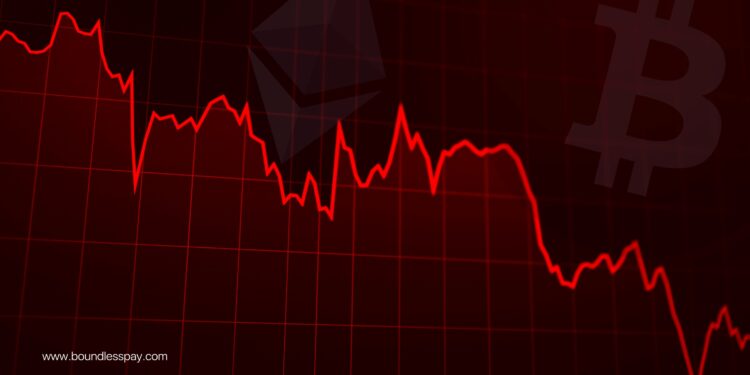Earlier this week, the crypto market crashed. Bitcoin experienced one of the largest and most dramatic sell-offs in history, falling by roughly 20 percent in less than 24 hours to its lowest level in the past six months.
A more severe fate struck other well-known cryptocurrencies with eight of the top ten most valued cryptocurrencies apart from Bitcoin dropping by more than 25%.
Losses reaching more than $500 billion for the entire crypto market were recorded, raising concerns among investors that the predicted bull market may just have been an illusion.
What Triggered the Market Crash?
August 5, 2024, was one of the worst days in the history of cryptocurrency. Few predicted that for months, traders’ reliance on leverage has been gradually increasing market risks.
The main reason for the market slump was the rising costs on loans denominated in yen. Not limited to the cryptocurrency market, the collapse also had an impact on other significant financial markets, such as the stock market.
It’s an open secret that short-term institutional traders, who take advantage of the volatility of cryptocurrencies, have a major effect on market pricing. Most traders double down on their stakes using leverage (borrowed funds), often in very large amounts, to increase returns. Open interest, an estimate of net borrowing, was close to $40 billion just before the crash.
Most recently, the majority of these borrowed funds came from Japan. Rates in Japan remained at an all-time low, drawing in large trading companies which profited by taking out massive Japanese loans to finance transactions in foreign markets at cheaper rates.
A Sad Sunset: Ending the 17-Year-Old Policy in Japan
On July 31, the Bank of Japan increased the interest rate on short-term government bonds from 0% to 0.25%, and that was the beginning of the end. This came shortly after a recent boost in March, when the bank increased the rate from -0.1% for the first time in 17 years.
That seemingly innocent action started a chain of events that ultimately resulted in a roughly 18% and 26% drop in the price of Bitcoin and Ethereum, respectively.
Even traditional financial markets were severely hit; the US stock index, the S&P 500, fell more than 5% on the day.
Traders began liquidating billion-dollar holdings, maybe as a result of margin calls from lenders or just basic caution. According to CoinGlass, on August 4 and 5, more than $1 billion in leveraged trading positions, or hundreds of thousands of trade positions, were liquidated.
Where Next From Here?
According to famous trader Peter Brandt’s post on X, Bitcoin’s plunge in price since the April 2024 halving is beginning to mimic similar market patterns that preceded the 2016 bull run.
Whether or not the crypto market bounces back quickly, it is important to remember that the crypto markets are as unpredictable as they come. If there’s one lesson in all this, it’s to think twice before aping into another leveraged trade.




















